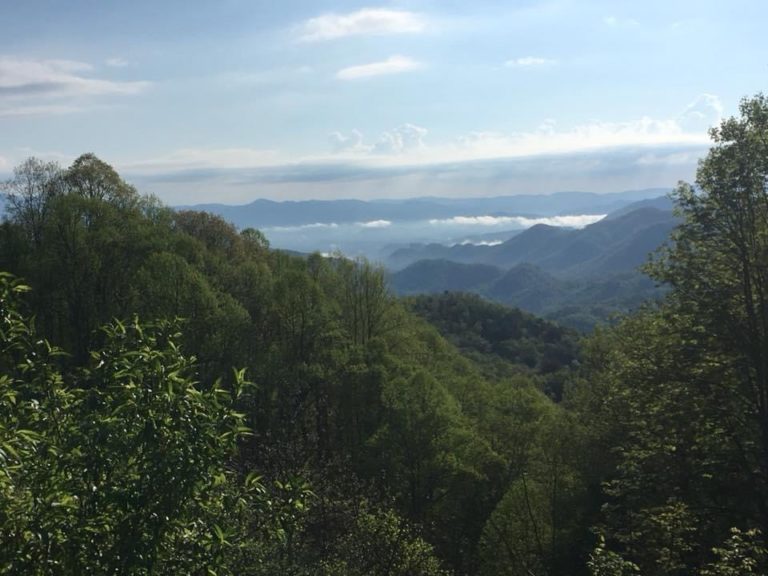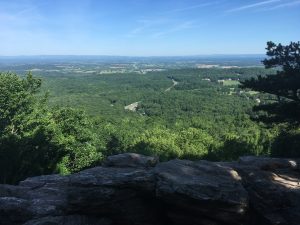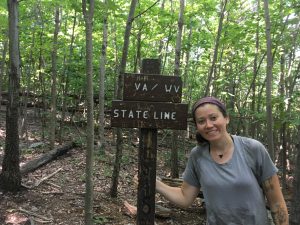When asked what motivations were still the same at the end, Appalachian Trail thru-hikers had one or two motives that remained from the beginning. Besides the overarching goal of finishing the trail, the same amount (68 percent) still wanted the challenge, while the rest wanted to have fun and be in nature (32 percent).
Not a single hiker mentioned the want or need to escape an aspect of their home life anymore, as something inside of them had shifted on their walk. As competence grew, so did the pleasure of thru-hiking. After settling into a daily routine, motivations slowly started to change.
Every hiker reported their motives changing more than they stayed the same, but let’s just look at the few facets that held steady until the last day of the hike.
“I still have a deep desire to finish the trail,” said Tooth Fairy one sunny afternoon, the day before he reached the northern terminus. His blue polyester-spandex shirt was now too big for him after losing so much weight. His light-green shorts fell above mid-thigh, showing off his bulging leg muscles. He was one of the many thru-hikers who wore their shoes until they became sandals, and I could see the sides of his feet escaping their mesh prison. The only motive still pushing him forward now, that was prevalent initially, was the overarching desire to reach the terminus.

Tin Man, just like Tooth Fairy, still had a deep desire to finish as an overarching motivation at the end of the hike, even if all of the other reasons had changed. “I’ve said from the beginning that I’m going to finish this,” said Tin Man with conviction while itching his scraggly beard that his corporate job never permitted him to have in the Netherlands. He nursed his German beer over the course of our entire interview, saying the drink gave him a sense of home. But he made it clear that even though he missed home, he wasn’t ready to go back until he finished what he started.
Along the same lines, Costa Rica and Shawshank had the notion of simply “not wanting to quit” stuck in their minds the entire trail. They weren’t used to always seeing their commitments through to the end and weren’t going to miss their chance to do so now. Shawshank told me under his breath that when he finished the trail, he wanted it to be like the scene at the end of the movie for which he was named, where the main character comes out with his arms up as a symbol of his long-awaited freedom.
For others, the allure of a challenge was an incentive throughout the entire trail, both physical and emotional.

The mental challenge was still pushing Little John forward at the end of the trail because he knew that working through his PTSD and depression wasn’t something to ever be done with. “I still wanted to keep going and just get through it,” he told me, meaning his push to cope with suicidal thoughts and understand himself better. He admitted his fault in forcing answers when they weren’t there, but eventually came upon them once he finally released himself from the constant search. He wasn’t sure why, but when he walked through his home state in New England he began seeing things more clearly, opening up to other hikers, and engaging them for the first time.
Dragon, who also walked to understand and work through her depression, liked doing something that seemed impossible. “I wanted to show people it’s possible to do things you’re intimidated by,” she said of her initial hesitation to leave everything behind and start the Appalachian Trail. Her depression kept her in a near robotic state at home, making it difficult to commit to something like a two-thousand-mile walk; but here she was, nevertheless.
Flake loved the physical side of things, and still enjoyed the physical challenges, even on the last day. After pondering about his motives at the end of the hike, he said, “the physical challenge, the completion of a task, and overcoming the day-to-day pains.” He couldn’t believe that he had walked from Georgia to Maine. Even on his final day he was thinking about future hikes to challenge him even more.
Woody felt the same as Flake, and explained how much fun he had the entire way. “I still like to hike and move my body and see what it can do,” he said with his hands clasped in front of him on the table. He had previously hiked only on family birthdays and special occasions growing up, so his AT thru-hike was an extended treat.
AT hikers in my study initially came to the trail equally for the challenge, to escape, and to have fun. During the first month, however, motivations began to shift and became two-fold; one-third now wanted to have fun in nature and two-thirds yearned for the challenge.
This infers that the original third wanting to escape some piece of their life no longer felt that need after the first month.
Instead, they focused more on the challenge and enjoyment of the journey, setting their attention mainly on learning how to get through each day and gain the skills and competence to successfully reach the terminus. Some aspects of hiker motivations remained the same the entire time, urging them forward even when they didn’t want to continue.


